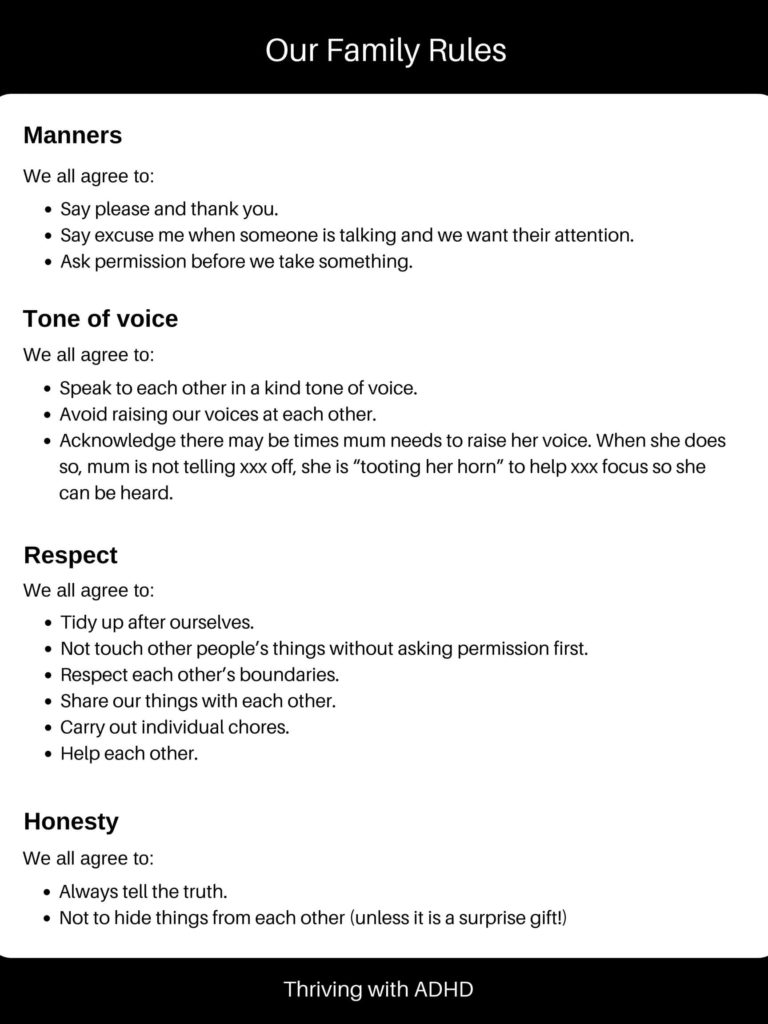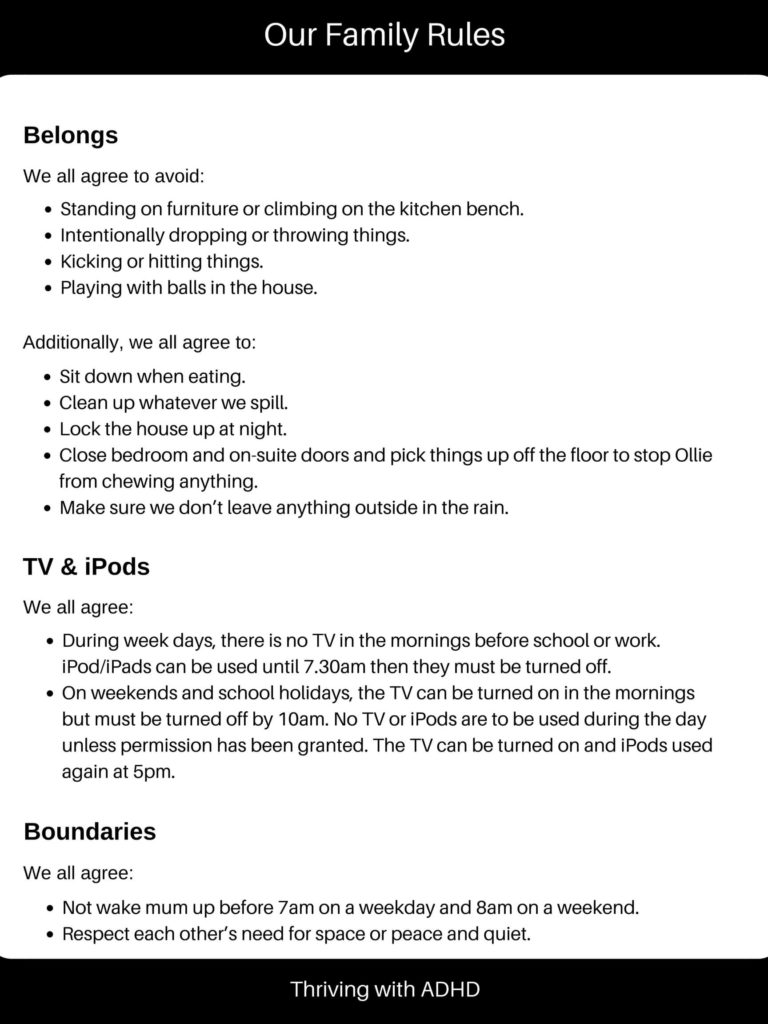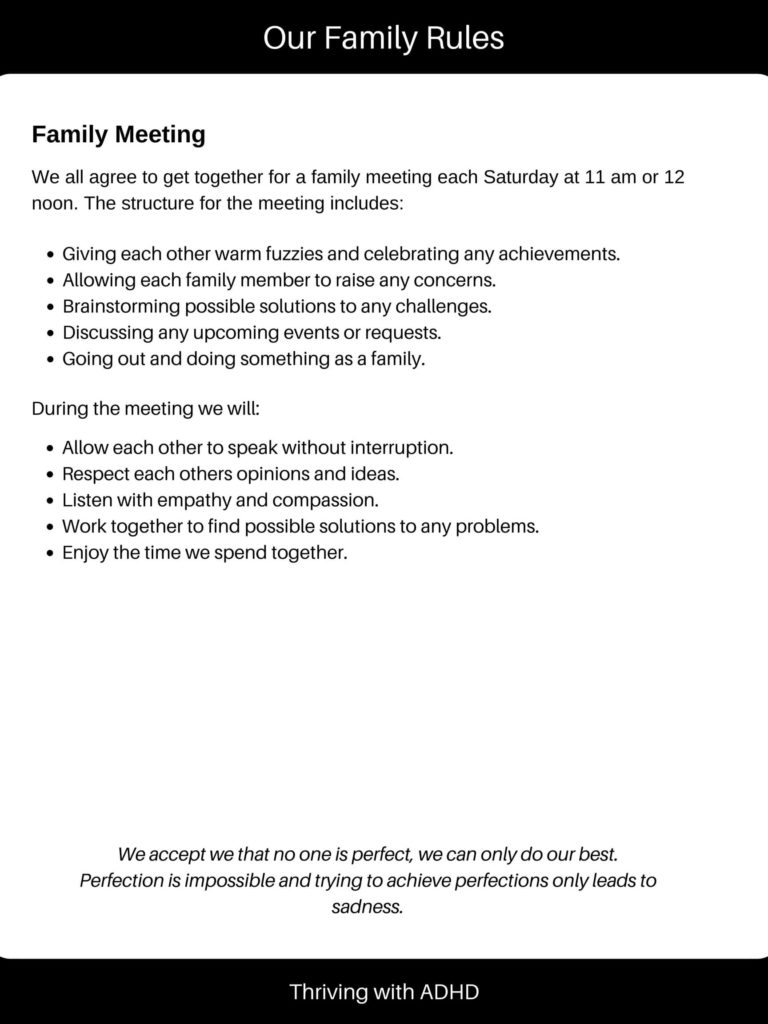Setting Realistic Rules & Expectations
For children to be successfully they need to clearly understand what is expected of them. These expectations also need to be reasonable and achievable. That is, the child governed by the rules must have the capability, resources and know-how required to successfully achieve the desired outcomes.
Expectations can be communicated to children via rules and daily routines which serve to guide behaviour in a variety of situations. Rules and routines can also provide a sense of certainty and safety, assist with the formation of helpful habits and foster confidence and independence.
When developing rules and routines for children with ADHD, it is important parents and teachers take into consideration the child’s developmental delay and associated lagging executive function skills. This will enable them to either adjust the expectations implicit in the rules and routines accordingly or to identify and put in place strategies that aim to accommodate or support the child’s challenges, thereby improving the child’s ability to achieve success.
As an example, children with ADHD can have difficulty:
- remembering the rules and routines they are expected to follow
- picking up the steps involved in a task through observation alone
- recalling the steps involved in achieving a task
- problem solving and navigating around ‘road blocks’
- redirecting their focus back to the task at hand once distracted
- managing time appropriately
- regulating their emotions.
Valuable strategies that can support these executive function challenges therefore include:
- using explicit teaching principles, simple language and hands-on teaching techniques
- manipulating the time when a child is expected to complete activities so they are better able to succeed i.e., waiting until ADHD medication is on board before expecting a child to carry out a morning routine or assigning tasks that tax their executive functions earlier in the day to avoid challenges associated with fatigue
- putting tools in place to assist and support a child carry out tasks. For example:
- providing visual tools which externalise expectations and support the child’s non-verbal working memory i.e., a worksheet that shows the steps involved in completing a complex goal or a routine prompt poster which outlines each task a child is expected to fulfil, in which order, and when
- setting visual timers to assist a child keep track of time
- providing gentle prompts or redirection
- giving praise and implementing reward charts or other incentives that aid with motivation and positive enforcement of behaviours
- maintaining consistency around expectations and positive enforcement
- listening with empathy if a child becomes upset, anxious or angry. By listening with empathy parents and teachers help a child to feel heard and understood. They also assist the child to calm down, process their emotions and think more clearly. Listening with empathy also tends to open up teachable moments and provides an opportunity for collaborative problem solving and further skill development.
It also helps if parents and teachers remain realistic and flexible. And if they can acknowledge and accept that sometimes things don’t always go as planned or that other circumstances may at times override the importance of any expectations they have set.
Routine prompt charts
Below is an example of a simple routine prompt chart.

Introducing a family rules folder
One way of ensuring everyone in the family is aware of the rules and daily routines is to introduce a family folder. Setting up the folder can be a collaborative process and help foster a sense of belonging and security. Below is an idea for a template that can be used.
Research indicates that by involving the child in rule and routine development, stating the rules in a positive manner, and ensuring the rationale for each rule makes sense, motivation and cooperation towards rule attainment can be increased.





